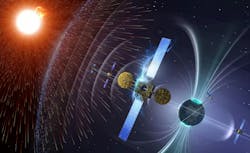Space Force approaches industry for cyber security, space domain awareness, and satellite servicing
EL SEGUNDO, Calif. – U.S. Space Force researchers are asking industry for space and cyber security technologies to enable capabilities to counter emerging space threats.
Officials of the Space Force's Space Domain Awareness and Combat Power branch in El Segundo, Calif., released a broad agency announcement (FA8819-24-R-B003) last week for the $99 million five-year FreeSol project.
The FreeSol project has five topics: resiliency technologies that increase survivability of space systems; improvements to space domain awareness that enhance the knowledge of space objects, threats, and environment; abilities to protect friendly space-related capabilities from attack; efficiencies that promote battle management command, control, and communications (BMC3); and ways to advance tests and training.
Resiliency technologies involve proliferation strategies; commercial standards and multi-domain reuse; dataflows and information sharing; redundancies; and rapid reconstitution.
Improvements to space domain awareness involve low-cost and resilient ground-based space domain awareness; low size, weight, and power (SWaP) space-based space domain awareness; and ground and space weather sensors.
Abilities to protect friendly space-related capabilities involve capability gap studies; cyber capabilities; active and passive phenomenology; and satellite servicing.
Efficiencies that promote space BMC3 involve space data analytic tools for large data sets and networks; artificial intelligence (AI) and automation for space operations; methods for advancing exercises, tests, and training environments involve ride share opportunities; solutions across several domains; and inter-satellite links for small satellites.
Companies interested should email 10-page concept papers no later than 23 Feb. 2029 to the Space Force's Melanie Gipson at [email protected] and Stephen Taylor at [email protected].
Those submitting promising concept papers will be asked to submit full proposals. Email questions or concerns to Melanie Gipson at [email protected] and Stephen Taylor at [email protected]. More information is online at https://sam.gov/opp/f9def9489c164fc0a41fe0881e6df348/view.

